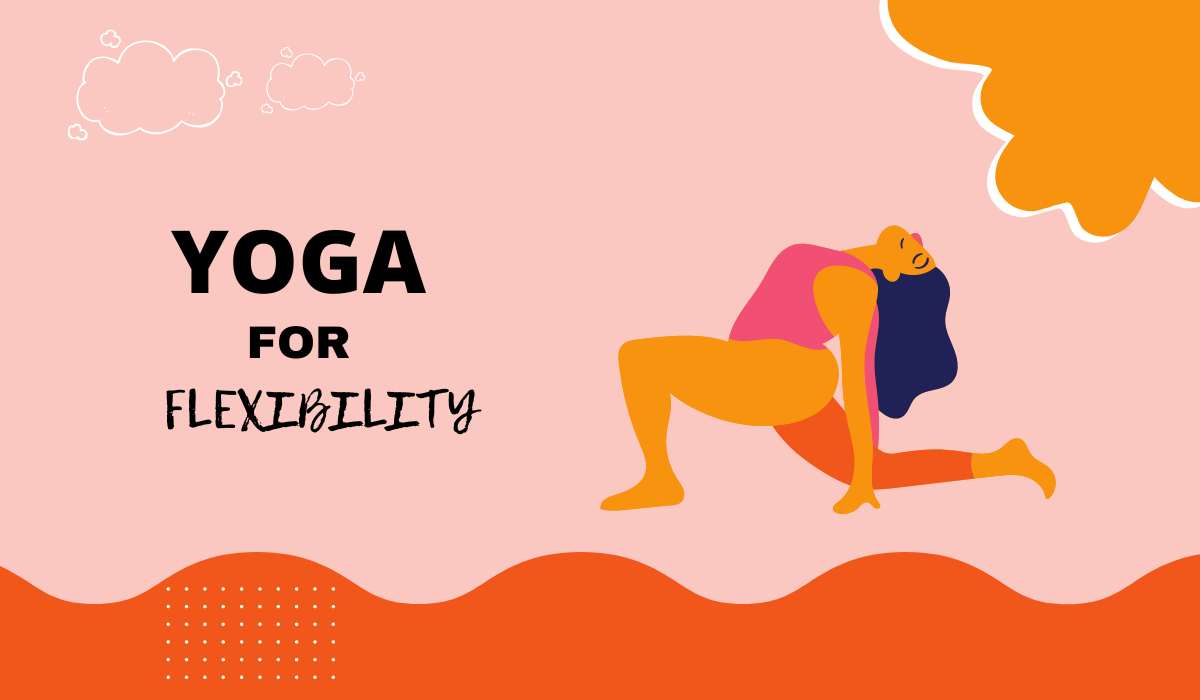Yoga for flexibility is a popular practice that can help increase range of motion, improve posture, and prevent injuries. Incorporating specific poses into your yoga routine can target different areas of the body and enhance overall flexibility. In this article, we will explore five must-try yoga poses that are known for their effectiveness in improving flexibility. Whether you are a beginner or an experienced yogi, these poses can be easily incorporated into your practice and help you reap the benefits of a more flexible body. So grab your yoga mat and let’s dive into these poses!
Importance of Flexibility in Yoga Practice
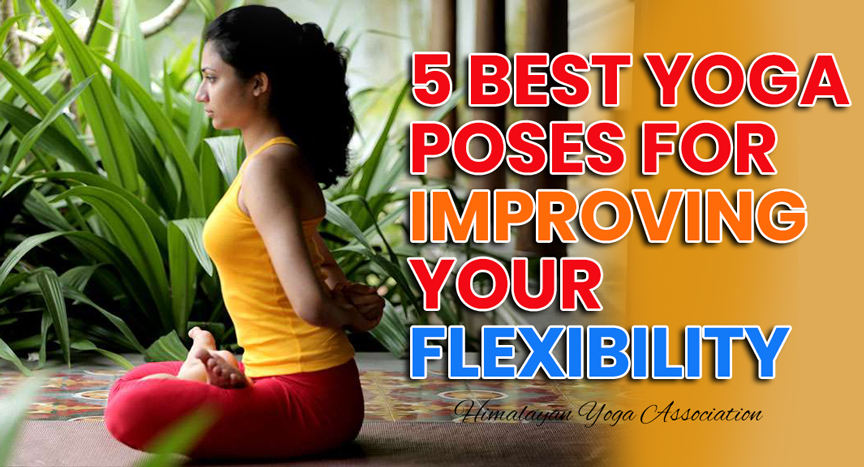
Flexibility is crucial in a yoga practice as it allows for a greater range of motion, improved posture, and reduced risk of injuries. When the body is flexible, it can move more freely and comfortably, enabling yogis to achieve deeper poses and hold them for longer durations. Flexibility also helps to release tension and tightness in the muscles and joints, enhancing overall ease and flow in the practice. Additionally, being flexible can contribute to better balance, coordination, and body awareness. To prioritize flexibility in yoga, practitioners can incorporate specific poses and stretches that target different areas of the body and gradually increase their range of motion over time. By regularly practicing yoga for flexibility, individuals can experience these physical benefits and enhance their overall well-being.
Benefits of flexibility in yoga
Increased flexibility in yoga offers numerous benefits. Firstly, it enhances the range of motion, allowing for deeper poses and longer holds. Secondly, it improves posture by releasing tension and tightness in the muscles. Additionally, flexibility reduces the risk of injuries during yoga practice. Furthermore, being flexible contributes to better balance, coordination, and body awareness. To achieve these benefits, practitioners can incorporate specific poses and stretches that target different areas of the body. By gradually increasing their range of motion over time, individuals can experience these physical benefits and enhance their overall well-being.
Common misconceptions about flexibility in yoga
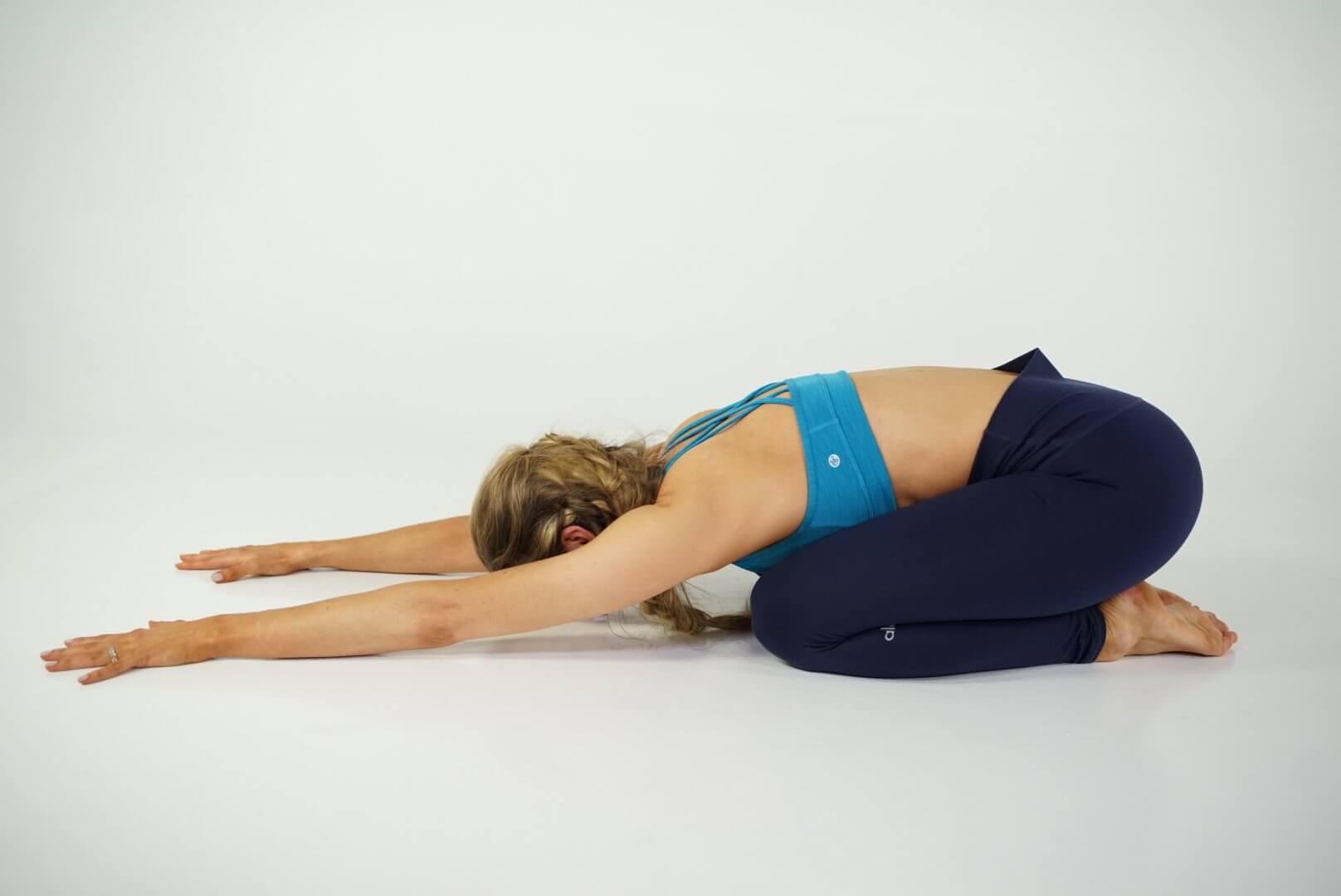
Common misconceptions about flexibility in yoga include the belief that you need to be naturally flexible to practice yoga, that flexibility is the primary goal of yoga, and that yoga is only for young and bendy individuals. However, yoga is for everyone, regardless of age or flexibility level, and it is not solely focused on achieving extreme flexibility. Instead, yoga promotes overall strength, balance, and mindfulness. It is important to remember that progress in flexibility takes time and consistency, and that yoga is a personal journey, with each individual working at their own pace and level.
Downward Facing Dog Pose (Adho Mukha Svanasana)
The Downward Facing Dog Pose (Adho Mukha Svanasana) is a staple yoga pose that stretches and strengthens the entire body. To perform this pose, start on your hands and knees, then lift your hips up and back, forming an upside-down “V” shape. Press your hands firmly into the mat, lengthen your spine, and relax your neck. This pose helps to relieve tension in the spine, hamstrings, and shoulders, and improves overall flexibility and strength. Practice this pose regularly to reap its benefits and improve your yoga practice.
Steps to perform Downward Facing Dog Pose

To perform the Downward Facing Dog Pose, start on your hands and knees.
Then, lift your hips up and back, forming an upside-down “V” shape.
Press your hands firmly into the mat, lengthen your spine, and relax your neck.
Make sure your feet are hip-width apart and your heels are pressing towards the ground.
Engage your core and breathe deeply as you hold the pose for a few breaths or longer.
Remember to maintain a straight line from your wrists to your tailbone.
To release the pose, gently lower your knees back to the mat.
Benefits of Downward Facing Dog Pose
Downward Facing Dog Pose, also known as Adho Mukha Svanasana, offers numerous benefits for the body and mind. It stretches and strengthens the entire body, including the arms, shoulders, hamstrings, and calves. This pose also helps to improve posture and relieve back pain. Additionally, it increases blood circulation and energy levels, calms the mind, and reduces stress and anxiety. Practicing Downward Facing Dog Pose regularly can help improve flexibility, balance, and overall physical and mental well-being. To experience these benefits, simply follow the steps outlined earlier and incorporate this pose into your regular yoga practice.
Triangle Pose (Trikonasana)

Triangle Pose (Trikonasana)
To practice Triangle Pose (Trikonasana), follow these steps:
- Stand with your feet wide apart, around 3 to 4 feet, with your arms extended out to the sides.
- Turn your right foot out 90 degrees and your left foot slightly inwards.
- Keep both legs straight and engage your core.
- Inhale and reach towards your right foot with your right hand, while extending your left arm up towards the ceiling.
- Keep your gaze towards your left hand. Hold this pose for a few breaths.
Benefits of Triangle Pose (Trikonasana) include:
- Stretches and strengthens the legs, hips, and spine.
- Improves flexibility in the hamstrings, groin, and hips.
- Helps to relieve stress and anxiety.
- Stimulates digestion and aids in detoxification.
Regular practice of Triangle Pose (Trikonasana) can enhance flexibility, increase physical strength, and promote overall well-being.
Steps to perform Triangle Pose
To perform Triangle Pose (Trikonasana), stand with your feet wide apart, around 3 to 4 feet, and extend your arms out to the sides. Turn your right foot out 90 degrees and slightly turn your left foot inwards. Keep both legs straight and engage your core. Inhale and reach towards your right foot with your right hand, while extending your left arm up towards the ceiling. Keep your gaze towards your left hand and hold this pose for a few breaths. Triangle Pose stretches and strengthens the legs, hips, and spine, while improving flexibility in the hamstrings, groin, and hips.
Benefits of Triangle Pose for flexibility
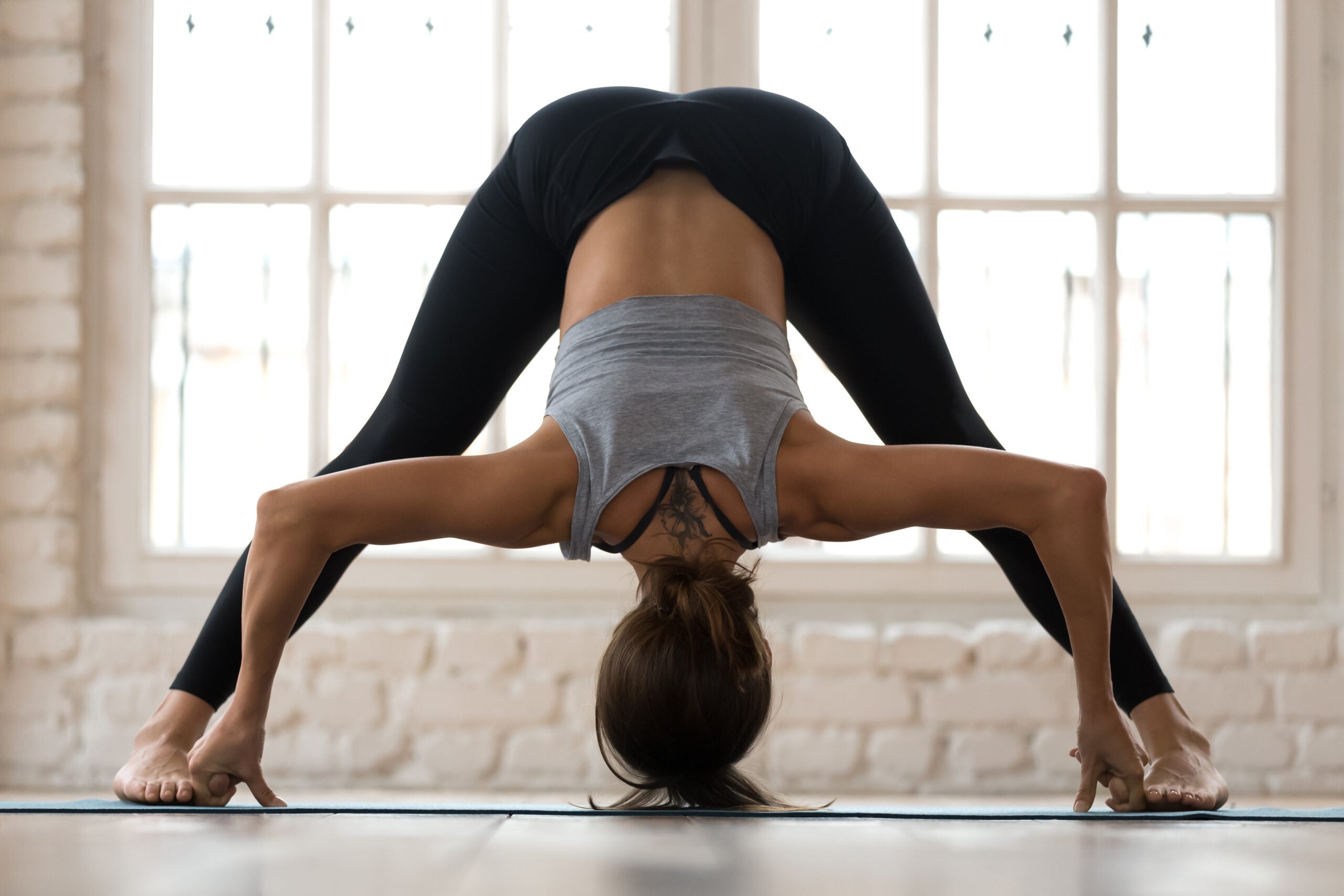
Triangle Pose (Trikonasana) is a powerful yoga pose that offers numerous benefits for improving flexibility. It stretches and strengthens the legs, hips, and spine, while also opening up the hamstrings, groin, and hips. By practicing Triangle Pose regularly, you can increase the range of motion in these areas, allowing for greater flexibility and mobility. Additionally, this pose helps to improve balance and posture, as well as stimulate digestion. To perform Triangle Pose, stand with your feet wide apart, reach towards your right foot with your right hand, and extend your left arm up towards the ceiling. Hold the pose for several breaths to experience the full benefits.
Cobra Pose (Bhujangasana)

Cobra Pose (Bhujangasana)
To perform Cobra Pose, start by lying on your stomach with your legs extended and the tops of your feet flat on the mat. Place your hands on the mat, directly under your shoulders. Inhale and gradually lift your chest off the mat, using your back muscles. Keep your elbows close to your body as you rise into a gentle backbend, avoiding any strain in your lower back. Hold the pose for a few breaths, then slowly release back to the starting position. Cobra Pose helps to stretch and strengthen the spine, shoulders, and chest, while also improving flexibility in these areas.
Steps to perform Cobra Pose
To perform Cobra Pose (Bhujangasana), start by lying on your stomach with your legs extended and the tops of your feet flat on the mat. Place your hands on the mat, directly under your shoulders. Inhale and gradually lift your chest off the mat, using your back muscles. Keep your elbows close to your body as you rise into a gentle backbend, avoiding any strain in your lower back. Hold the pose for a few breaths, then slowly release back to the starting position. Cobra Pose helps to stretch and strengthen the spine, shoulders, and chest, while also improving flexibility in these areas.
Benefits of Cobra Pose in improving flexibility

Cobra Pose (Bhujangasana) is a powerful yoga pose that helps improve flexibility in the spine, shoulders, and chest. By gently lifting the chest off the mat, this pose stretches and strengthens the back muscles, promoting increased range of motion. Regular practice of Cobra Pose can also help to alleviate back pain and improve posture. Additionally, it opens up the heart and lungs, enhancing deep breathing and boosting overall respiratory health. Incorporating Cobra Pose into your yoga routine can enhance your flexibility, increase strength in the upper body, and promote a sense of openness and vitality.
Pigeon Pose (Eka Pada Rajakapotasana)
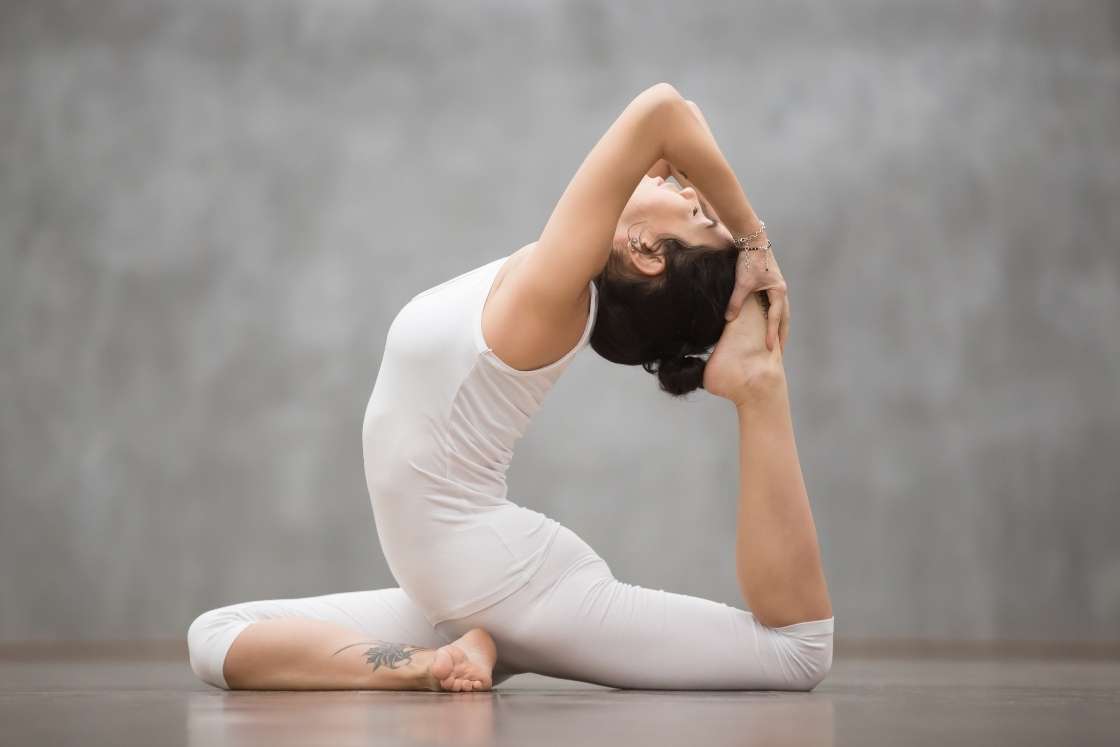
Pigeon Pose (Eka Pada Rajakapotasana)
To perform Pigeon Pose, start in a high plank position. Bring your right knee forward and place it behind your right wrist. Extend your left leg behind you, keeping the top of your foot on the mat. Square your hips and slowly lower your upper body towards the ground, resting on your forearms or extending your arms forward. Hold the pose for a few deep breaths and then repeat on the other side.
Benefits of Pigeon Pose for hip flexibility
Pigeon Pose stretches and opens the hips, helping to improve flexibility and release tension in the hip muscles. It can also help alleviate sciatic nerve pain and improve overall hip mobility. Regular practice of Pigeon Pose can enhance flexibility in the hips, making it easier to perform other yoga poses and movements that involve hip opening.
Steps to perform Pigeon Pose

To perform Pigeon Pose, start in a high plank position. Bring your right knee forward and place it behind your right wrist. Extend your left leg behind you, keeping the top of your foot on the mat. Square your hips and slowly lower your upper body towards the ground, resting on your forearms or extending your arms forward. Hold the pose for a few deep breaths and then repeat on the other side.
Benefits of Pigeon Pose for hip flexibility
Pigeon Pose, also known as Eka Pada Rajakapotasana, is an excellent yoga pose for improving hip flexibility. This pose helps to open up the hips, stretch the glutes, and release tension in the lower back. By regularly practicing Pigeon Pose, you can increase the range of motion in your hips, alleviate hip pain, and improve overall flexibility. This pose also helps to improve circulation in the hip area and can be beneficial for runners, athletes, and individuals who spend long periods sitting. Incorporating Pigeon Pose into your yoga routine can help you achieve greater hip flexibility and enhance your overall yoga practice.
Conclusion of Yoga for Flexibility

Incorporating these 5 must-try yoga poses for improved flexibility can greatly enhance your overall yoga practice. By regularly practicing Downward Facing Dog Pose, Triangle Pose, Cobra Pose, and Pigeon Pose, you can increase your range of motion, strengthen your muscles, alleviate pain, and improve circulation. Consistency is key, so make sure to stay dedicated to your yoga practice to experience the full benefits of these poses. This concludes our guide to yoga for flexibility. Remember to listen to your body, go at your own pace, and enjoy the journey of enhancing your flexibility through yoga.
Incorporating these 5 must-try yoga poses for improved flexibility
To incorporate these 5 must-try yoga poses for improved flexibility, begin by incorporating Downward Facing Dog Pose (Adho Mukha Svanasana) into your practice. This pose stretches the entire body, particularly the hamstrings and calves. Next, include Triangle Pose (Trikonasana) to work on opening the hips and lengthening the side body. Follow this with Cobra Pose (Bhujangasana) to strengthen the back and increase flexibility in the spine. Finally, integrate Pigeon Pose (Eka Pada Rajakapotasana) to deeply stretch the hip flexors and release tension in the hips. Consistently practicing these poses will enhance your overall flexibility and allow you to progress in your yoga journey.
Tips for staying consistent with yoga practice
Consistency is key when it comes to a successful yoga practice. Here are some practical tips to help you stay consistent:
- Set a schedule: Determine a specific time each day for your practice and stick to it.
- Start small: Begin with shorter practice sessions and gradually increase the duration as you build your stamina.
- Find accountability: Whether it’s a yoga buddy or an online community, having someone to hold you accountable can help you stay motivated.
- Mix it up: Experiment with different styles and poses to keep your practice exciting and prevent boredom.
- Prioritize self-care: Make sure to prioritize rest and recovery, listening to your body’s needs, and taking breaks when necessary.
By implementing these tips, you can cultivate a consistent yoga practice that will benefit your flexibility and overall well-being.
For More Blogs visit Aerns

